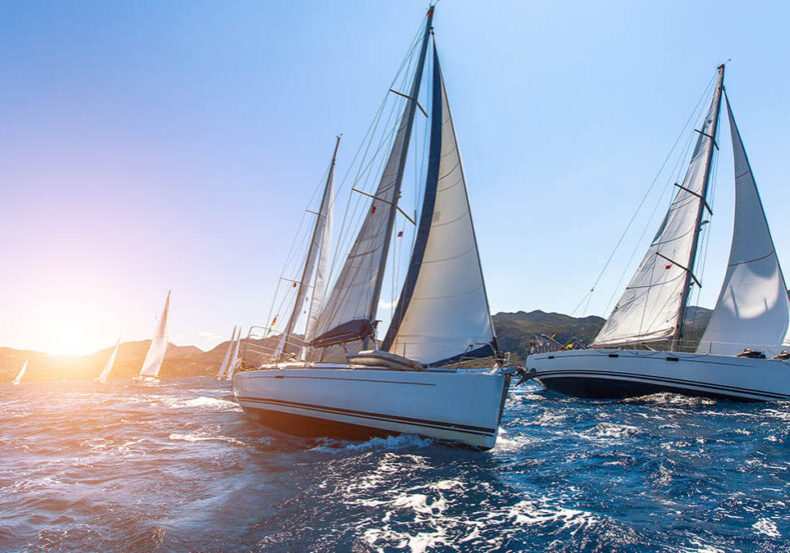Investors in 2023 are experiencing one of the strongest markets in history, with the S&P 500 up more than 20% through July and the Nasdaq 100 up more than 44%.
Meanwhile, volatility has plummeted, with the VIX moving down to its lowest level since January 2020.
This calm and steady move higher has been undeniably great for investors, but does it reveal what it takes to be a great investor?
Let’s explore…
On April 22, 1969, Robin Knox-Johnston ended a harrowing 315-day journey at sea. In doing so, he became the first person to sail alone, without stopping, around the entire world. This was a feat many had thought impossible. Nine sailors entered the round-the-world race in 1968 but only Knox-Johnston would finish.
At the start, the media portrayed Robin as “the underdog,” a term he took issue with. He was a navigator by profession and had served in the Merchant Navy and Royal Navy for more than ten years. Robin built most of his 32-foot boat by himself, which he knew inside and out, and was better prepared for the long voyage than perhaps anyone else.
A few months in, he was rounding Cape Horn off South America, entering the so-called “Roaring Forties” (strong westerly winds in the Southern Hemisphere between 40-50°S latitude). The massive swells and ferocious storms he encountered there knocked his boat down, damaging his steering and causing him to lose his freshwater supply.
Having been through many tough times before, Robin didn’t panic, reckoning he could live off a supply of beer cans if need be and catch rainwater in the sails. He used an unusually large rope — which he brought in case of an emergency to inventively secure the vessel during the remaining storms — and sailed on.
There would be many more tests along the way, including losing radio connectivity for more than two months, but Robin ultimately prevailed, finishing right where he started (Falmouth, UK), 315 days later.
On January 15, 2009, US Airways flight 1549 landed in the Hudson River. It was the middle of winter and freezing cold in New York, with an air temperature of 19 °F and the icy water at 41 °F.
Only five minutes earlier, all had been well as the flight took off from LaGuardia Airport en route to Charlotte. “It was completely routine and unremarkable for the first 100 seconds,” Captain Sully Sullenberger would later note.
Even as a small child, Sully wanted to be a pilot, and he learned to fly a single-engine plane as a teenager. He was admitted to the U.S. Air Force Academy after high school and would later become a flight leader and training officer in the military, flying jet fighters in Europe and the Pacific. In 1980, he moved over to civilian life, flying commercial planes for nearly 30 years before that cold January day. And it was a good thing he did, because he would need every bit of his training and airmanship crafted through thousands and thousands of hours of difficult flight time.
Only two minutes into flight 1549, disaster struck, with a flock of Canadian Geese knocking out not one, but both engines. There was only one option: the plane had to land — and land fast.
Assessing there wasn’t enough time to head back to LaGuardia or nearby Teterboro in New Jersey, Sully calmly uttered the now famous words …
“We’re gonna be in the Hudson.”
And just like that, they were in the water, landing at a speed of over 140 miles per hour. Incredibly, all 155 people on board survived, with the indelible image of the passengers on the wing of the plane, waiting to be rescued. The event would be forever known as the “Miracle on the Hudson.”
On October 16, 2008, Warren Buffett penned his now famous op-ed: “Buy American. I am.”
Admitting he was clueless as to the near-term direction of the stock market, he felt compelled to counteract the pessimism of the day with much-needed optimism.
At the time, the entire financial system was collapsing, and the S&P 500 was down more than 40% from its high just one year earlier. The U.S. economy was in the midst of its worst recession since the Great Depression with no end in sight.
In his note, Buffett acknowledged all of this and more (“the headlines will continue to be scary”) but calmly reiterated his simple rule for buying: “be greedy when others are fearful.”
It sounds so simple and yet only those who have been through tough times can say the same with confidence. Buffett was 78 years old in October 2008 and had lived through many excruciating bear markets. He knew that things would get better again, but by the time the news turned positive, the opportunity would be lost (“if you wait for the robins, spring will be over”).
Buffett ends the letter by saying those who “hold cash equivalents feel comfortable,” but “they shouldn’t,” as they have “opted for a terrible long-term asset that pays virtually nothing. Equities will almost certainly outperform cash over the next decade, probably by a substantial degree.”
With the passage of time, these words couldn’t have been more prescient. Stocks would not bottom until March 2009, but since Buffett wrote his “Buy American” note, the S&P 500 is up more than 550% versus a gain of less than 10% for Treasury bills.
The common theme in these three stories is clear …
Smooth seas don’t make great sailors.
Clear skies don’t make great pilots.
Calm markets don’t make great investors.
Being great is about more than just the final achievement. It’s about the struggle, resilience, and wisdom that only comes from overcoming adversity along the way. Hard times in investing are inevitable; there’s always another correction or bear market on the horizon. The perseverance shown through these challenging times is what separates the good from the great.
Enjoy the calm markets for as long as they last, but remember this: when the seas get rough, when the skies turn dark, when the markets are in turmoil — that’s where greatness lies.



